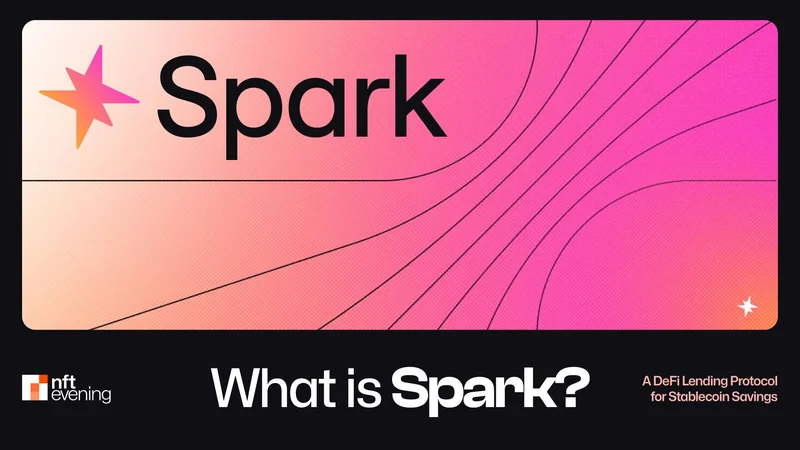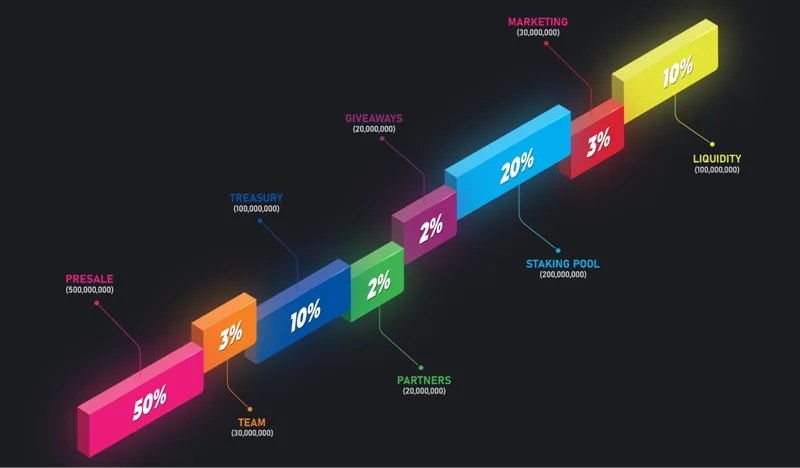Distributed Ledger is a database system used for recording data or transactions, characterized by the absence of a centralized authority responsible for storing and managing these records. Instead, these records are distributed across multiple nodes (such as computers), where all participants can maintain a complete copy of the ledger, and updates to the ledger must reach consensus through a consensus mechanism.
Key Characteristics of Distributed Ledgers
Decentralization: Unlike traditional databases managed by a single entity (like banks), distributed ledgers are maintained collectively by multiple nodes in the network, reducing dependence on a single entity.
Transparency: Each node holds an identical copy of the ledger, allowing all participants in the network to view the same data. This transparency enhances trust, especially in systems requiring public records.
Security: Since data is stored across multiple nodes, the entire system can continue to operate even if some nodes are attacked or fail, significantly improving data security.
Immutability: Once data is recorded, it is typically difficult to alter, especially in blockchain technology, where changing a historical record is extremely challenging.

How Distributed Ledger Technology Works
Distributed Ledger Technology (DLT) can be viewed as a decentralized recording system that maintains consistency among multiple participating nodes to ensure the integrity and security of data.
Multi-node Storage:
DLT replicates data across multiple nodes distributed globally. Each node acts as a holder of a ledger copy, operating independently while having the same data.
Ledger Synchronization: When new transactions or data are added, all nodes update synchronously to ensure consistency.
Example: Imagine a global store alliance where each store has a ledger recording all product inventories. If a customer purchases an item at one store, all stores’ ledgers are updated simultaneously to ensure consistent inventory information.
Consensus Mechanism:
To ensure all nodes have the same data and prevent tampering, DLT employs a consensus mechanism. This is essential for maintaining data consistency in decentralized systems.
Common Consensus Mechanisms:
Proof of Work (PoW): Nodes solve complex mathematical problems to prove they have done enough computational work to record new transactions. Although resource-intensive, it enhances security.
Proof of Stake (PoS): Participation is based on the “stake” (e.g., number of tokens) held by the nodes. Nodes with more tokens are more likely to be chosen to validate transactions, making it more energy-efficient than PoW.
Byzantine Fault Tolerance (BFT): Ensures that even if some nodes act maliciously or fail, others can still reach consensus. This is often used in enterprise-level distributed ledgers to enhance network fault tolerance.
Example: The consensus mechanism is akin to a voting system; when a transaction is initiated, nodes “vote” on whether to record it in the ledger. The transaction only becomes official if a majority of nodes agree.
Transaction Verification:
When users initiate a transaction, it must be verified by nodes to ensure its legality and data correctness.
Digital Signatures: Transactions are signed using encryption technology. Users sign the transaction with their private key, and the public key is used to verify the authenticity of the signature.
Verification Process: Upon receiving a transaction, nodes check its validity (e.g., account balance, signature validity), and once confirmed, add it to the ledger and broadcast it to other nodes.
Example: In a banking system, a transfer must verify account balance and identity before recording it in the ledger. Similarly, nodes in a distributed ledger must validate the legality of transactions.
Immutability of Data
A key feature of distributed ledgers is that once data is recorded, it is usually not easily altered. In blockchains, data is organized into “blocks,” each containing the encrypted hash of the previous block. Altering a single transaction record requires modifying all subsequent blocks, which is computationally nearly impossible.
Block Structure: Each block contains a set of transaction data and a hash pointing to the previous block, forming a chain structure that ensures tampering is detected by the network.
Logging: Typically, there is no “delete” operation; all modifications are made as “append” operations, ensuring transaction history is transparent and traceable.
Example: If a company uses a ledger to record transactions, each page has the page number of the previous page. Altering content would cause a mismatch in subsequent page numbers, revealing the tampering.
Privacy and Encryption
In certain scenarios, privacy is crucial. Distributed ledger technology typically employs encryption to protect transaction data.
Public Key Encryption: Each user has a public and private key; the public key generates a public address, while the private key signs transactions, ensuring only the parties involved understand the transaction's details, with other nodes only able to verify the legitimacy of the signature.
Zero-Knowledge Proof: Some systems (like Zcash) use "zero-knowledge proof" technology, allowing users to prove transaction validity without revealing specific details, greatly enhancing privacy.
Example: When banks process electronic transfers, they verify validity without disclosing the transfer amount or account information, similar to how distributed ledgers protect user privacy through encryption.
On-chain and Off-chain Data
Not all data in distributed ledger technology is directly recorded on-chain; some data may be stored off-chain to improve efficiency and save storage space.
On-chain Data: Important transaction and verification information is recorded on the distributed ledger, ensuring it is public, transparent, and immutable.
Off-chain Data: Large files (like videos) are not stored directly on the ledger but are kept in external systems, with only the hash stored on-chain to verify authenticity.
Example: A supply chain management system records critical logistics information on-chain but does not store actual product images. Instead, external databases hold large files, with only hashes on-chain.
Incentive Mechanisms
In certain distributed ledger systems (especially blockchains), incentive mechanisms exist to encourage nodes to participate in the network and maintain the integrity of the ledger. For example, in the Bitcoin system, miners receive Bitcoin rewards for validating transactions and adding new blocks, ensuring enough nodes participate in maintenance to enhance security and decentralization.
Example: Miners verify Bitcoin transactions by solving mathematical problems and are rewarded with Bitcoin, similar to banks paying employees for processing transfers.
Relationship Between Blockchain and Distributed Ledger
The relationship between blockchain and distributed ledger can be seen as a "subset relationship," meaning that blockchain is a specific implementation of distributed ledger technology. To help understand the relationship between the two, here’s a detailed explanation:
Definition of Distributed Ledger:
A distributed ledger is a database that does not rely on a single centralized authority, with data records stored across multiple nodes in the network, where consensus mechanisms ensure ledger consistency.
Definition of Blockchain:
A blockchain is a specific type of distributed ledger that organizes transaction or data records into packages called "blocks," linked sequentially to form a chain, hence the name.
Similarities:
Decentralization: Both eliminate dependence on a single entity, with data existing simultaneously across multiple nodes.
Consensus Mechanisms: Both require consensus mechanisms to ensure data consistency among nodes; common mechanisms include Proof of Work (PoW) and Proof of Stake (PoS).
Immutability: Once data is added, it is very difficult to alter, ensuring the security and reliability of the system.
Differences:
Data Structure: Distributed ledgers can utilize various forms to store data without needing a specific structure; blockchains, however, must store data in block format and link them in a chain.
Implementation Methods: Distributed ledgers can be implemented in diverse ways without adhering to the blockchain's chain structure; blockchains must rely on the “block” and “chain” structure.
Flexibility: Distributed ledgers are highly flexible, allowing adjustments to storage methods and consensus mechanisms based on the scenario; blockchains are more structured, with speed and scalability limitations.
Typical Examples:
Bitcoin Blockchain: A public distributed ledger that records all transactions, viewable by anyone, with blockchain ensuring security and transparency.
Hyperledger Fabric: An enterprise-grade distributed ledger with high flexibility, allowing for private ledger and consensus mechanism configurations, suitable for specific application scenarios like supply chains.
Future Outlook
Distributed ledger technology is expanding into various fields, including finance, supply chain management, and healthcare. As technology continues to advance, future distributed ledgers are expected to achieve greater scalability, security, and user privacy protection.
Distributed ledger technology will provide the foundation for the future digital economy, potentially reshaping our business models, transaction methods, and information sharing practices.
FAQ
Q: What is distributed ledger technology, and how does it differ from traditional databases?
A: Distributed ledger technology is a decentralized database system where data records are distributed across multiple nodes without a single controlling authority. In contrast, traditional databases are typically managed by centralized entities, with data stored on a single server, making them vulnerable to single points of failure.
Q: How is data security ensured in a distributed ledger?
A: Data security in a distributed ledger is ensured through various means, including decentralized storage, encryption, consensus mechanisms, and immutability. Even if some nodes are attacked, the integrity and security of the data can still be maintained by the other nodes.
Q: What are some practical applications of distributed ledger technology?
A: Distributed ledger technology is widely applied in areas such as financial services (like digital currencies and cross-border payments), supply chain management, identity verification, medical record management, and smart contracts, enhancing transparency and efficiency.
Q: How can one participate in a distributed ledger network?
A: To participate in a distributed ledger network, one typically needs to download the appropriate software and connect to the network. Participation methods may vary by network; for instance, in a blockchain, you can become a miner by verifying transactions and maintaining the network to earn rewards.
Q: Is distributed ledger technology suitable for all industries?
A: While distributed ledger technology shows potential across many industries, it is not universally applicable. Its suitability depends on the need for data sharing, transparency requirements, and the demand for decentralization. Some industries may rely more on centralized management, so specific scenarios and needs should be evaluated.
Related Articles

What is SparkLend? A Beginner-to-Advanced Guide to Decentralized Lending Made Easy
SparkLend is a decentralized, non-custodial liquidity market protocol built on the Ethereum blockchain. Simply put, it functions like a bank without intermediaries, allowing users to borrow and lend d
June 26, 2025
What is sUSDS? How Do I Acquire sUSDS?
This guide will walk you through Sky Savings’ sUSDS and sUSDC—your gateway to earning yield with stablecoins while keeping your funds secure.Sky Savings: Your Journey to Stablecoin Yields Begins HereW
June 26, 2025
What is SparkLend? A Complete Guide from Beginner to Pro
SparkLend is a decentralized, non-custodial liquidity market protocol that allows users to participate as lenders or borrowers. Lenders provide liquidity to earn passive income, while borrowers can ta
June 24, 2025
What Exactly Does Spark Protocol Do? A Complete Guide
This guide will walk you through Spark Protocol — an innovative platform designed to tackle the long-standing issue of fragmented liquidity in the DeFi space. You'll learn how to earn yield, borrow as
June 24, 2025
RXS Token Trading Guide: From Presale to Uniswap – A Complete Walkthrough
This guide will walk you through the trading process of the RXS Token, from the restrictions during the presale phase to free trading on Uniswap, helping you trade securely and efficiently.1. Introduc
June 24, 2025
